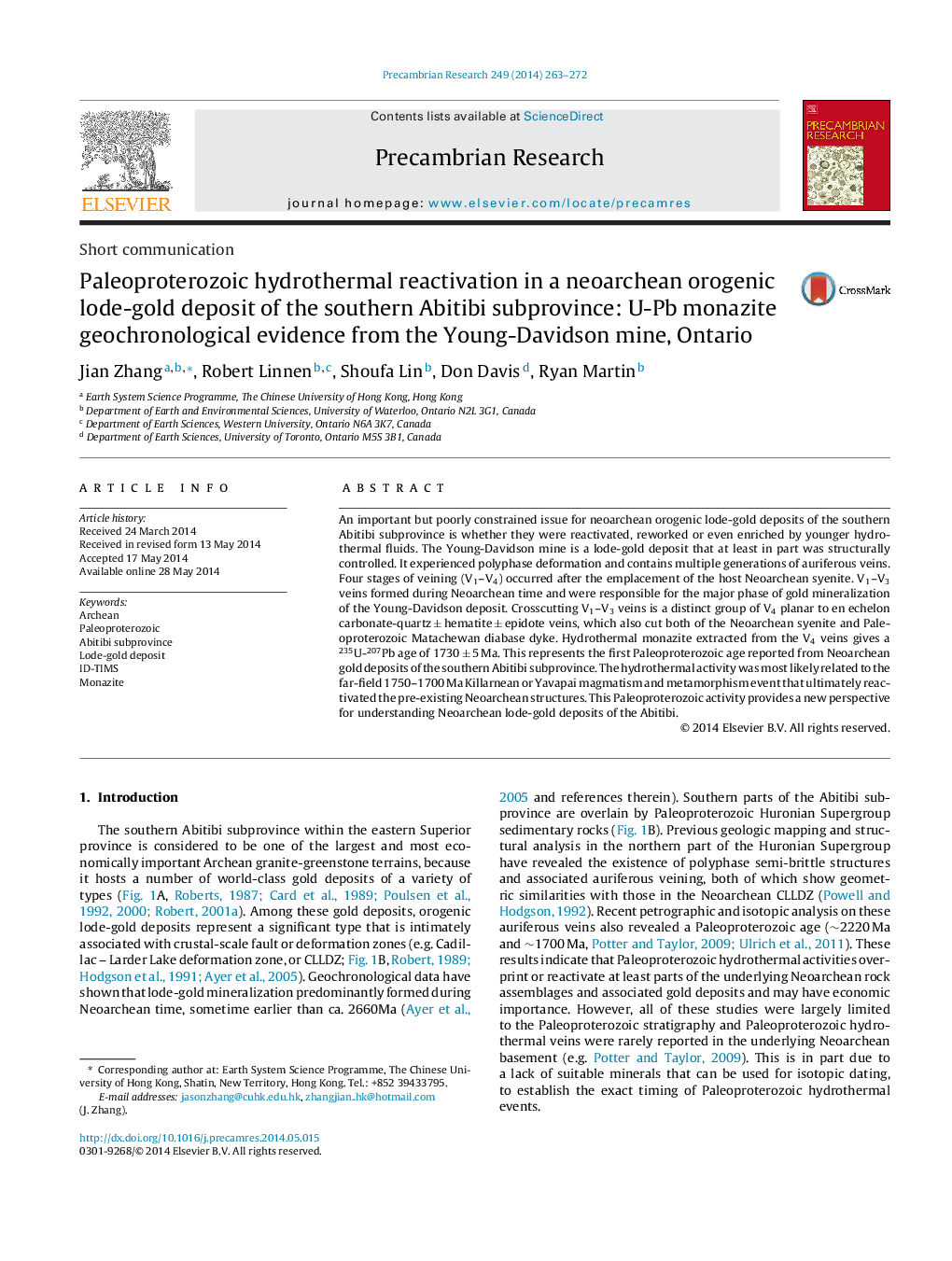| Article ID | Journal | Published Year | Pages | File Type |
|---|---|---|---|---|
| 4723009 | Precambrian Research | 2014 | 10 Pages |
•We distinguish multiple generations of auriferous veining from the YD gold deposit.•We report the first ID-TIMS Paleoproterozoic age from the Neoarchean gold deposit.•We confirm a Paleoproterozoic hydrothermal reactivation on Neoarchean gold deposits.
An important but poorly constrained issue for neoarchean orogenic lode-gold deposits of the southern Abitibi subprovince is whether they were reactivated, reworked or even enriched by younger hydrothermal fluids. The Young-Davidson mine is a lode-gold deposit that at least in part was structurally controlled. It experienced polyphase deformation and contains multiple generations of auriferous veins. Four stages of veining (V1–V4) occurred after the emplacement of the host Neoarchean syenite. V1–V3 veins formed during Neoarchean time and were responsible for the major phase of gold mineralization of the Young-Davidson deposit. Crosscutting V1–V3 veins is a distinct group of V4 planar to en echelon carbonate-quartz ± hematite ± epidote veins, which also cut both of the Neoarchean syenite and Paleoproterozoic Matachewan diabase dyke. Hydrothermal monazite extracted from the V4 veins gives a 235U-207Pb age of 1730 ± 5 Ma. This represents the first Paleoproterozoic age reported from Neoarchean gold deposits of the southern Abitibi subprovince. The hydrothermal activity was most likely related to the far-field 1750–1700 Ma Killarnean or Yavapai magmatism and metamorphism event that ultimately reactivated the pre-existing Neoarchean structures. This Paleoproterozoic activity provides a new perspective for understanding Neoarchean lode-gold deposits of the Abitibi.
